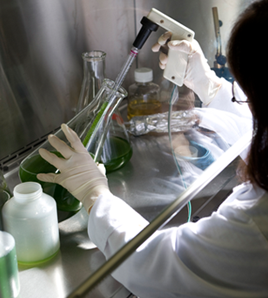 While I know we’ve talked about the promise of algae-based biofuels, especially biodiesel, many of you have pointed in derision to the seemingly always present caveat: in about five years… the amount of time the ideas seem to take until they’re ready for the street.
While I know we’ve talked about the promise of algae-based biofuels, especially biodiesel, many of you have pointed in derision to the seemingly always present caveat: in about five years… the amount of time the ideas seem to take until they’re ready for the street.
But there are some companies that are not still five years away from making algae biofuels viable. They are on the verge of producing it in usable quantities now. This article in Popular Science profiles five companies that are making biofuels out of algae, although those companies are still working on making it commercially viable. Here are a couple of the projects now working in the United States:
Solix Biofuels
The Project /// A demonstration facility that could produce up to 3000 gallons of algal biofuels per acre per year by the end of 2009
The Location /// Coyote Gulch, Colo.
The Technology /// Solix uses specialized photo-bioreactors in which batches of microalgal cultures are grown in large, closed-growth chambers under controlled light and temperature conditions. The company claims its closed systems can produce up to seven times as much biomass as open-pond systems. Once the cultures are fully grown, their oil is extracted through the use of chemical solvents like benzene or ether. The solvents are mixed into the chambers to separate the oil from the algae, and it is then collected from the surface. Solix is also collaborating with the Los Alamos National Laboratory to use its acoustic-focusing technology to concentrate algal cells into a dense mixture by blasting them with sound waves. Oil can then be extracted from the mixture by squeezing it out; this makes the extraction process much easier and cheaper, obviating the need for chemical solvents.
To Market /// Tentatively by the winter of 2009.
Sapphire Energy
The Project /// A 300-acre integrated algal biorefinery
The Location /// Southern New Mexico
The Technology /// Sapphire’s focus is on “green crude,” a liquid that has the same composition as crude oil, and is therefore compatible with existing refineries. The company has already shown that its fuel can be used in cars and even jets. Sapphire has a 100-acre pilot facility near Las Cruces, N.M.
To Market /// The plan is to make 1 million gallons of diesel and jet fuel per year by 2011, 100 million by 2018, and 1 billion gallons per year by 2025. There are no figures as of yet for the now-running 300-acre facility.
Solazyme
The Project /// Along with Sustainable Oils (camelina-based biofuel) and Honeywell subsidiary UOP (biodiesel), Solazyme plans to supply 400,000 gallons of fuel to the Air Force and 190,000 gallons to the U.S. Navy 1500 gallons of jet fuel for the U.S. Navy by 2010.
The Location /// South San Francisco
The Technology /// Solazyme engineers designer algal cultures using DNA from different strains to maximize oil production and size and grows them in large fermentation vessels before harvesting their oil. It first tested its jet fuel in late 2008.
To Market /// Solazyme claims that it is on track to produce over 20,000 gallons of fuel for the Navy by 2010. The company hopes to bring the cost of its fuel down to $60 to $80 per barrel within next two to three years.
Admittedly, algae-based biofuels need to get more cost-effective, but for you skeptics who say it will never happen, that’s what they said about the ethanol and biodiesel industries when they were young.

